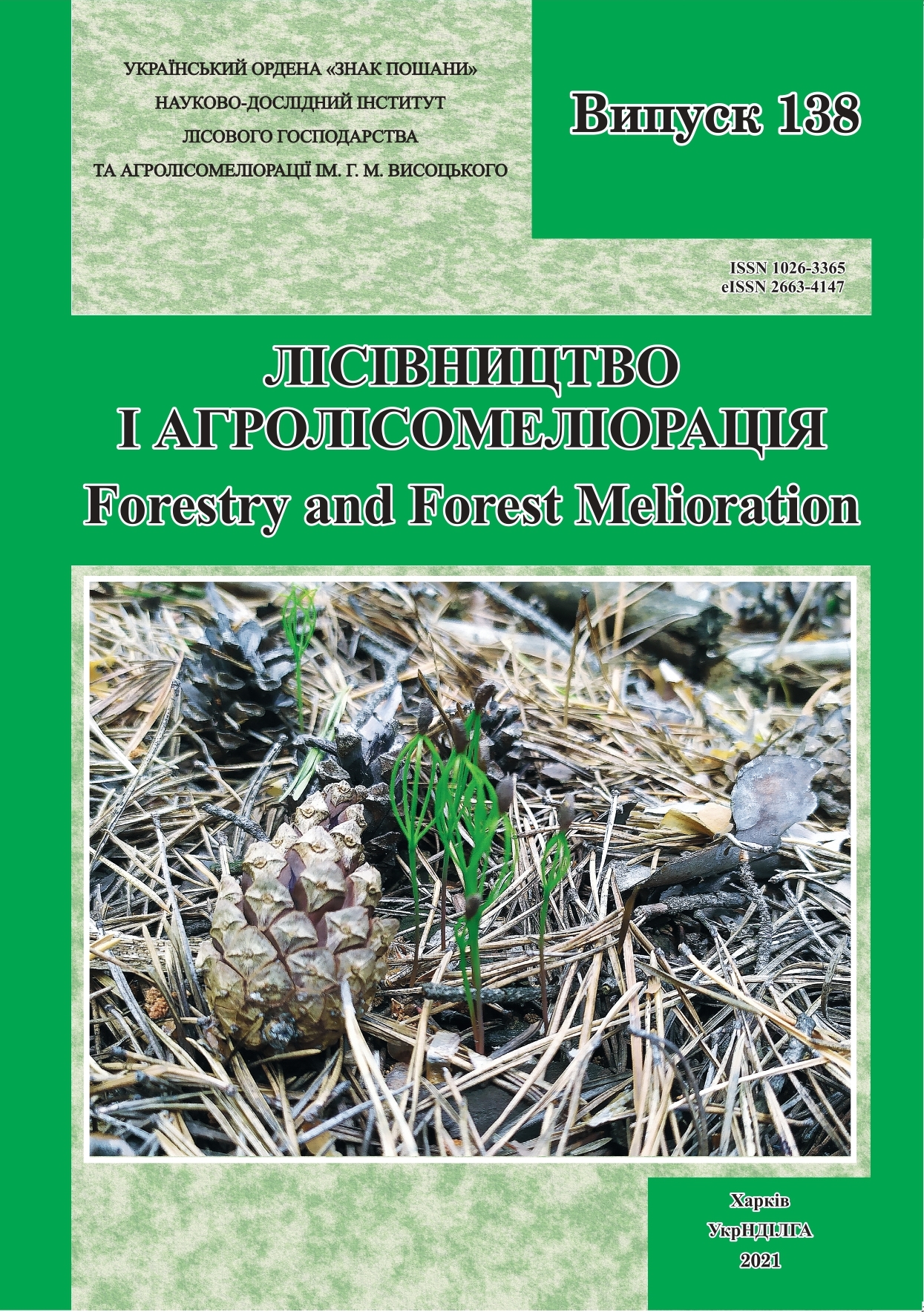Abstract
Introduction
Under global climate change it is essential to do research aimed at increasing the productivity and biological sustainability of forests. In this regard, the issue of conservation of forest genetic resources of the main forest-forming species is especially urgent under harsh steppe conditions.
The aim of the work was to assess the state of the gene pool of the main forest-forming species in Luhansk Region, Ukraine, and provide scientifically grounded proposals to expand the permanent forest seed base as well as to increase its efficiency taking into account projected climate change for the Northern Steppe in Ukraine.
Materials and Methods
Materials for the research were the data on the forest fund of the State Forest Resources Agency of Ukraine, the authors’ field research materials as well as sources cited in the bibliography. The use of permanent forest seed base for seed harvesting by forest state enterprises in Luhansk Region was defined after requesting seven enterprises for the relevant data.
According to the Donetsk Forest Seed Laboratory, the State register of genetic resources of tree species in Luhansk Region includes genetic reserves, plus trees, plus plantations, and permanent forest seed plots of the following forest-forming species: Scots pine, Crimean pine, and English oak.
Results and Conclusions
Significant shortcomings in the functioning of the permanent forest seed base in Luhansk region, in particular the lack of facilities for harvesting seeds of main forest species and a low reproductive capacity of the permanent forest seed base, do not promote effective reproduction of valuable stands adapted to the arid climate of Steppe. For Luhansk Region it is recommended to make an inventory of the existing permanent forest seed base objects, to select the plots of the gene pool as well as to establish new ones based on (a) presence of stands of natural origin; (b) needs of the forest enterprises in tree seeds; (c) categories of the plots to be afforested; (d) anthropogenic load on the stands. Introduction of the main forest-forming species in the perspective of certification of permanent forest seed base objects with the use of various methods of genomic and genetic selection, as well as DNA labelling will allow reaching a new level of forest seed production. The creation of a regional bank of Scots pine and English oak seeds will enable meeting the needs in silvicultural production in the years when there is no fruiting. A new forest seed zoning is proposed to clarify the areas of Scots pine seed harvesting in Luhansk Region.

This work is licensed under a Creative Commons Attribution 4.0 International License.
